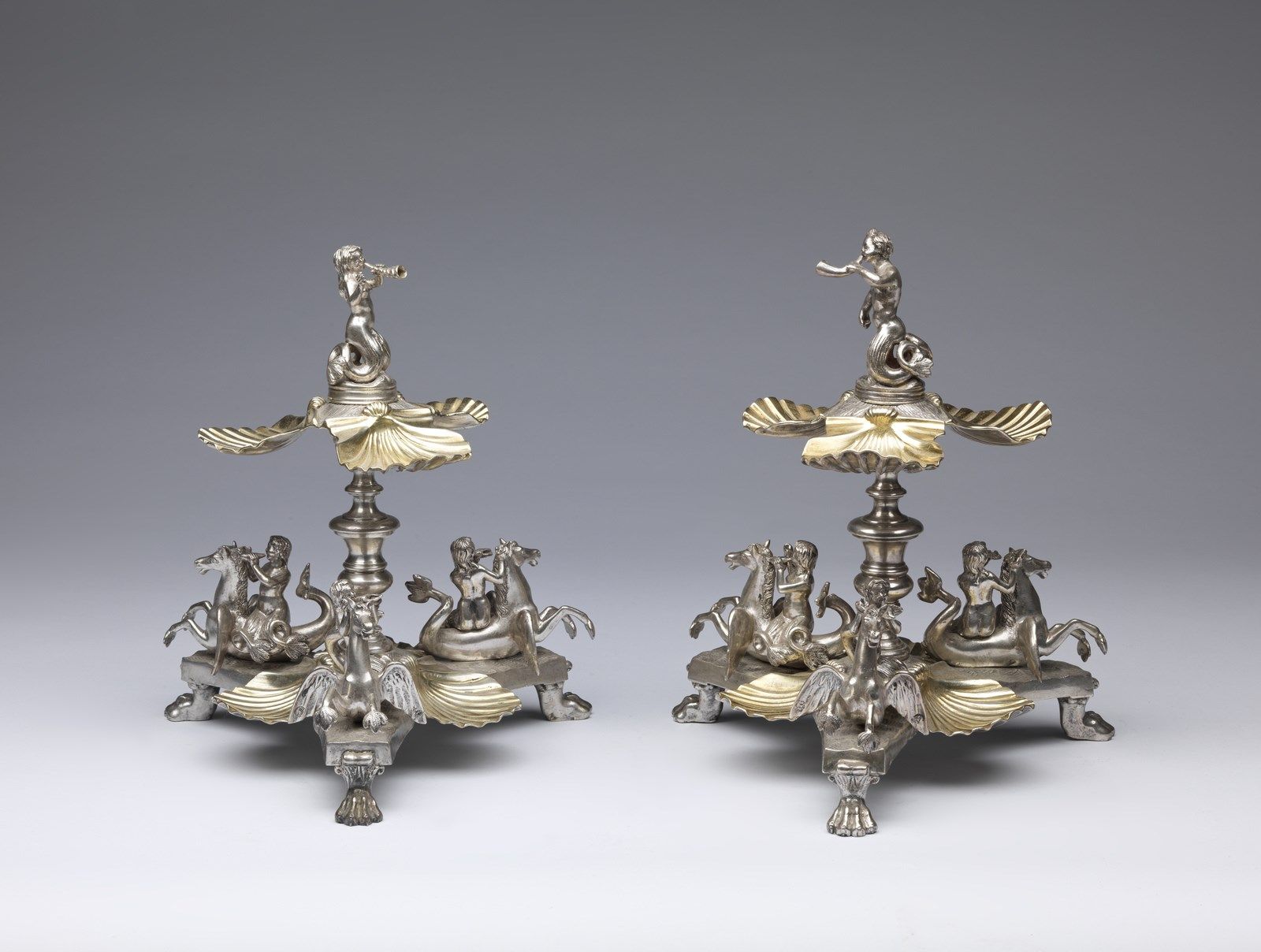Descrizione
ARGENTIERE VENEZIANO DEL XVII SECOLO A pair of parcel gilt silver salt cellars, with a triangular base, supported by leonine legs, interspersed with gilt silver fan salt cellars, winged sea horses mou…
A pair of parcel gilt silver salt cellars, with a triangular base, supported by leonine legs, interspersed with gilt silver fan salt cellars, winged sea horses mounted by sirens sounding a shell, a turned central element supporting three other salt cellars surmounted by a triton. . Cm 19,00 x 23,00 x 19,00. Weight: 2,576 kg. Hallmarks: lion mark of the Zecca di San Marco; ZC interspersed with a tower, mark of Sazador in Zecca Zuanne Cottini (1682-1736); CC, not identified.The object, made with several fused and chiseled elements, is built with the assembly of a three-lobed base supported by lion's legs, in a formal logic widespread in the Baroque period in Venice for cult objects of similar setting such as bases of also triangular candlesticks supported by lion paws. Formal analogy can also be found in cast and turned silver and bronze candlesticks, similar in shape to the central support of the object. The figures of the sea horses also refer to the various minor bronze artifacts of Venetian and Paduan derivation, widespread after the sixteenth century throughout the area and which are inspired by similar objects known as the one published by Pazzi in which there are elements derived from Vittoria and Riccio.Certainly both from the architectural and sculptural models of the bronze repertoire were also inspired the silver centerpieces made in Naples and Messina between the end of the 17th century and the very beginning 18th century (Dabbene) and ours, albeit of a more simplified manufacturing, is not certainly unrelated to the subjects of the diffused bronze examples cited and in particular, for the triton on the top, to that of the end of the previous century in the Brescia Museum (Planiscig), with which our object shows notable affinities. It is plausible that the object, of which we find rare testimonies in silverware works also in other areas of Italy, was made at the request of some wealthy client by a silversmith who was inspired by the richest repertoire of bronze products that the Paduan and Venetians workshops created over the span of two centuries, up to the late eighteenth century.Comparative literature: P.Pazzi, "I punzoni dell'argenteria veneta", Tomo I, Pola 1992; P. Pazzi, "Oro di Venezia", Venice 1996; Donaver-Dabbene, "Argenti italiani del '700 e '800", Milan 1998, p. 186;L. Planiscig, "Piccoli bronzi italiani del Rinascimento", Milan 1930 (tav.162; f.281).
274
ARGENTIERE VENEZIANO DEL XVII SECOLO A pair of parcel gilt silver salt cellars, with a triangular base, supported by leonine legs, interspersed with gilt silver fan salt cellars, winged sea horses mounted by sirens sounding a shell, a turned central eleme
